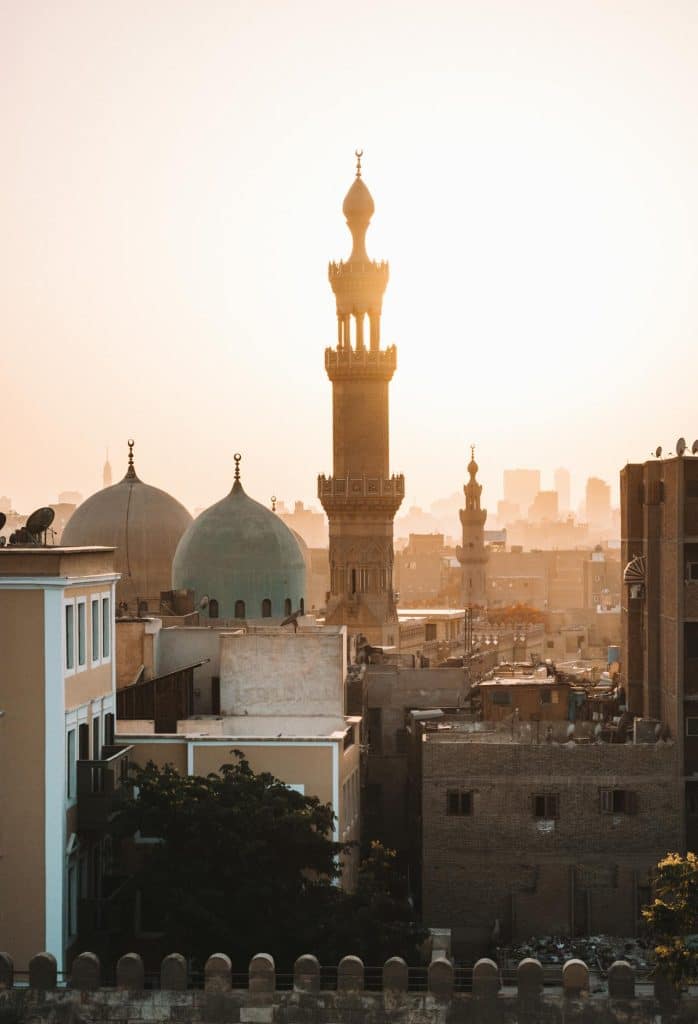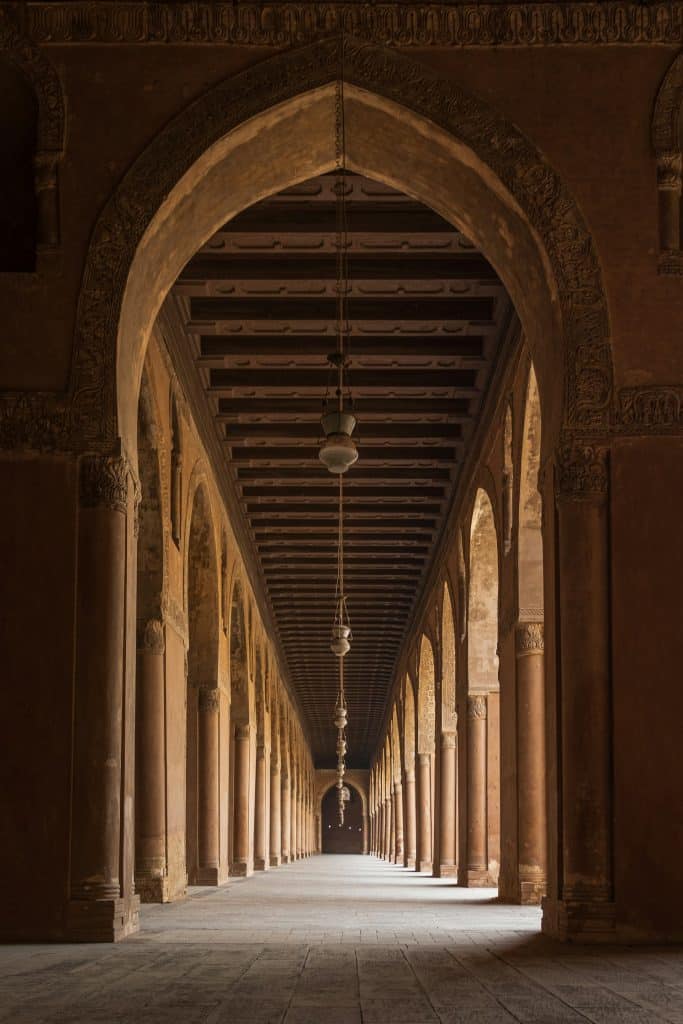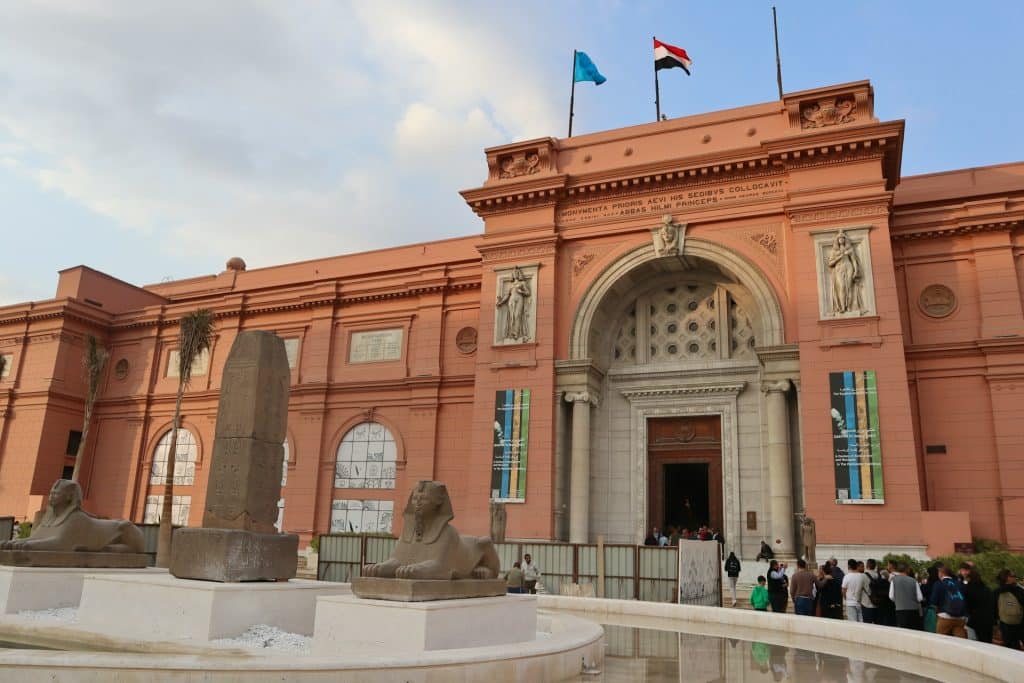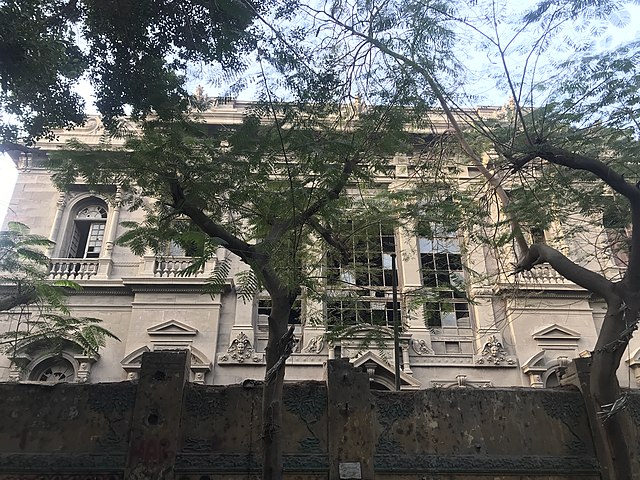First impressions of Cairo can be deceiving. For starters, despite the proximity of the Pyramids at Giza, Cairo is not an ancient Pharaonic city.
Except for a small area of greater Cairo, the city’s origins date to medieval times. But there is so much history to appreciate across the city beyond the nearby Pyramids.
Moreover, packed streets and incessant traffic jams might make it seem like Cairo is not a very walkable city. But this is not the case! In fact, the terrain is mostly level, and many sites are relatively close together within particular neighborhoods.
So, let’s virtually explore a walking tour of historic Cairo, Egypt!


Table of Contents
A Walking Tour of Historic Cairo Beyond the Pyramids

Morning-Downtown Cairo
Grab a pastry to supplement your hotel breakfast and watch the city’s heart come to life early in the morning. Start in Tahrir Square. Known initially as Ismailia Square after a 19th-century Egyptian ruler, this public space was meant to showcase Cairo as a “Paris on the Nile.”
Tahrir, or Liberation Square, gained global fame as the epicenter of Egypt’s revolutionary events from 2011 to 2013.
Tahrir Square is Cairo’s nerve center. It is surrounded by iconic buildings such as the Egyptian Museum, the historic campus of the American University in Cairo, and the Arab League Headquarters. Moreover, the Obelisk of Rameses II has graced the square since 2020.
From Tahrir, head for Taalat Harb Square. On the way, take a detour down Champollion Street. At first glance, this might seem like just a street full of autobody shops. But there is so much more.
For starters, it is home to one of the city’s most famous restaurants, Abu Tarek, which specializes in Egypt’s national dish, kushari (a mix of noodles, rice, black lentils, chickpeas, fried onions, and a tangy tomato sauce).
Nearby, you’ll find the ruins of a 19th-century palace built by Said Halim Pasha, a member of Egypt’s former royal family. Although derelict today, there are still signs of the palace’s impressive architectural features. Moreover, the palace serves as a reminder of the street’s time as one of the most desired addresses in Cairo.

Continue to Taalat Harb Square, named for the founder of Egypt’s national bank. Today, his monument stands in the center of one of downtown’s busiest roundabouts. Moreover, downtown streets are lined with apartment and office buildings from Cairo’s “Paris on the Nile” era.
Finally, the streets radiating from Taalat Harb host many shops, restaurants, and cafes that we will return to later.

Early Afternoon-The Citadel

After lunch, head for the Cairo Citadel. This sprawling hilltop fortress dates from the Crusades in the 12th century. It was built by legendary Muslim commander Saladin to defend Egypt from Crusader attacks.
For more than seven centuries, the Citadel was the seat of power for Cairo’s rulers. Today, it houses several museums and the impressive 19th-century Muhammad Ali or Alabaster Mosque.
You can also see the site where the Alabaster Mosque’s namesake, Muhammad Ali Pasha, consolidated his hold on power in Egypt.
From the terrace near the Citadel’s Police Museum, you can look down on the site where Muhammad Ali had the remaining leaders of Egypt’s former rulers, the Mamluks, massacred in 1811. Eliminating Mamluk leaders allowed Muhammad Ali to build a dynasty that became modern Egypt’s royal family until the revolution of 1952.
Don’t miss the views of the city skyline and the distant pyramids from the Citadel. On my first visit to Cairo, I got my first glimpse of the pyramids from the Citadel. It was definitely a pinch-me moment!
Part of the complex is off-limits to visitors as it is military property. However, additional areas of the fortress are being opened to the public.
Late Afternoon-Islamic Cairo

Next, descend from the fortress walls and head for Islamic Cairo, the heart of the medieval city. On the way, you’ll pass two historic mosques. The first of these is the 14th-century Mosque-Madrasa of Sultan Hasan. This is one of the country’s foremost architectural and religious landmarks. In fact, it even appears on some Egyptian banknotes.
The other is the Mosque of Ar-Rifai, the burial place for many members of modern Egypt’s former royal family and the last shah of Iran.
Soon, you will reach the twin-minareted gate of Bab Zuweila, one of the entrances to Cairo’s historic medieval core. The area is loaded with famous and little-known monuments from the medieval Fatimid era through the 19th century, including the Al-Azhar Mosque. Your path through the area is the southern side of Al Muizz Li Din Allah Street.

The street’s namesake, Caliph Abu Tamim Ma’ad al-Muizz Li Din Allah, moved the Fatimid capital to the newly founded Al-Qahira (Cairo, “The City Victorious”) in 969 CE.
The northern side of Al Muizz Li Din Allah Street is known as Bein Al Qasreen (Palace Walk). This area contains architectural gems, from palace complexes to mosques and mausoleums, from the Mamluk era in Egyptian history (1250-1517).
Sandwiched between is the sprawling marketplace of Khan Al Khalili. Merchants first set up shop here back in the 14th century. You could spend hours perusing in shops and stalls situated in narrow alleys. It also makes an excellent place to stop for coffee or tea. Visit a traditional coffeehouse or ahwa, like Fishawi’s, which has been open since the 18th century.
Evening-Return to Downtown

Follow the local crowd to downtown’s bustling neon-lit streets when the sun goes down. The scene of walking around downtown at night is like taking a passeggiata (traditional evening stroll) in any Italian city like Rome.
Moreover, downtown hosts many cultural venues. While the contemporary arts festival known as D-CAF is the best-known event, there are usually film screenings, lectures, exhibitions, and other events in downtown locations.
You can do some window shopping, find your café, or hop between the area’s many options to close out a busy day. You’ve earned it!
Tips for Walking Historic Cairo

My first suggestion is to be very careful when crossing the street! Even seasoned city slickers are in for a shock the first time they attempt to cross a busy street. I advise watching locals first and following the pros’ lead.
If time permits, return to different neighborhoods on multiple days at other times of day. While we visited downtown twice here, you can substitute many neighborhoods, including Coptic Cairo, Zamalek, Heliopolis, etc.
Finally, take time to wander around the alleys and back lanes of neighborhoods like Islamic Cairo. I’ve been awe-struck by some of the buildings I’ve come across without looking at my phone to get from Point A to Point B.
For more ideas of things to do in Cairo, check out what to do in two days in Cairo.
Hope you enjoyed this walking tour of historic Cairo.




